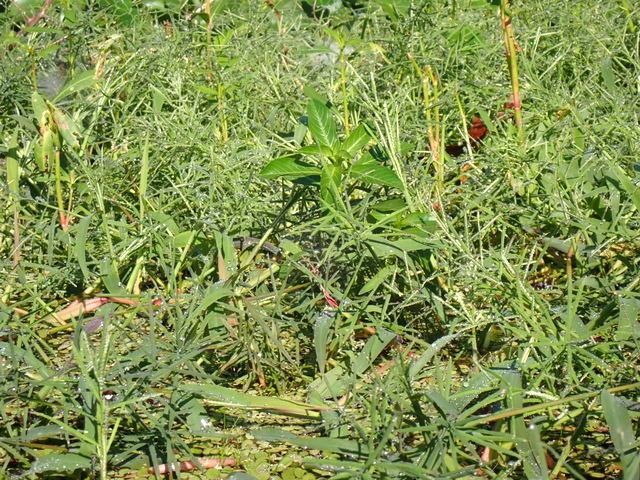Horsetail Paspalum
(Paspalum repens)
Horsetail Paspalum (Paspalum repens)
/
/

© mfeaver
CC BY 4.0
Image By:
© mfeaver
Recorded By:
Copyright:
CC BY 4.0
Copyright Notice:
Photo by: © mfeaver | License Type: CC BY 4.0 | License URL: http://creativecommons.org/licenses/by/4.0/ | Uploader: mfeaver | Publisher: iNaturalist |

























Estimated Native Range
Summary
Paspalum repens, commonly known as Horsetail Paspalum or Water Paspalum, is a perennial grass native to wetlands, marshes, and the edges of water bodies in South America, Central America, and the southeastern United States. It typically grows about a foot tall and can be identified by its lance-shaped leaves, spongy air-filled stems that allow it to float, and a reddish hue that may develop in the foliage. This grass is often found either submersed or floating in shallow water, indicating its preference for aquatic environments.
Horsetail Paspalum is valued for its ability to stabilize soil and prevent erosion along waterways. It can be used in constructed wetlands for wastewater treatment and is also utilized for forage in wet areas. However, due to its potential invasiveness, it is important to manage its growth and spread carefully. It thrives in full sun to part shade, in standing water or saturated soil, and requires little maintenance once established. In regions where it is not invasive, it can be an attractive addition to water gardens or naturalized pond edges.CC BY-SA 4.0
Horsetail Paspalum is valued for its ability to stabilize soil and prevent erosion along waterways. It can be used in constructed wetlands for wastewater treatment and is also utilized for forage in wet areas. However, due to its potential invasiveness, it is important to manage its growth and spread carefully. It thrives in full sun to part shade, in standing water or saturated soil, and requires little maintenance once established. In regions where it is not invasive, it can be an attractive addition to water gardens or naturalized pond edges.CC BY-SA 4.0
Plant Description
- Plant Type: Grass
- Height: 0.5-1 feet
- Width: 2-3 feet
- Growth Rate: Moderate
- Flower Color: N/A
- Flowering Season: Summer, Fall
- Leaf Retention: Evergreen
Growth Requirements
- Sun: Full Sun, Part Shade
- Water: High, Aquatic
- Drainage: Slow, Standing
Common Uses
Bank Stabilization, Erosion Control, Low Maintenance, Water Garden
Natural Habitat
Wetlands, marshes, and the edges of water bodies in South America, Central America, and the southeastern United States
Other Names
Common Names: Water Couch, Knotgrass
Scientific Names: , Paspalum repens, Axonopus repens, Ceresia fluitans, Cymatochloa fluitans, Cymatochloa pyramidalis, Cymatochloa repens, Paspalum bistipulatum, Paspalum bistipulatum, Paspalum fluctuans
GBIF Accepted Name: